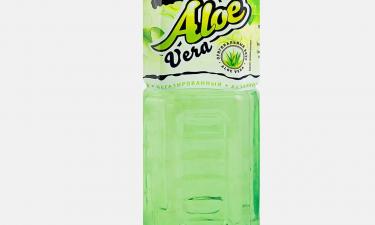K-19: Truth and Lies
The movie was widely advertised as an accurate rendition the K-19 tragedy. The opposite has now been proven Eight submariners died as a result of an accident that took place on board the Soviet K-19 submarine on July 4th, 1961. Fifty years after the tragedy, American movie-makers released a movie with the title K-19: The Widowmaker. The movie was shown in theaters in Ukraine in the middle of May of the current year. The Ukrainian premier of the motion picture was advertised nationwide as "the true story of the K-19 submarine." TV host Yury Marakov said that the movie was not a success in the States, because it was too kind to Soviet submariners.
Eight submariners died as a result of an accident that took place on board the Soviet K-19 submarine on July 4th, 1961. Fifty years after the tragedy, American movie-makers released a movie with the title K-19: The Widowmaker. The movie was shown in theaters in Ukraine in the middle of May of the current year. The Ukrainian premier of the motion picture was advertised nationwide as "the true story of the K-19 submarine." TV host Yury Marakov said that the movie was not a success in the States, because it was too kind to Soviet submariners.
Where did they see this kind attitude? Captain N. Zateyev, who commanded the crew, when a breakdown occurred on board the sub, was portrayed as a dumb careerist who had become the captain of the submarine because he was married to a daughter of a senior Soviet official. The movie portrayed the first commander of the reactor group as a drunkard, and Soviet submariners dropped their pants and showed their backsides to an American serviceman who was photographing them. This gesture is totally American; Russians would instead put a hand on their elbow. If this is what they call kindness, what do they call evil then?
Americans simply tried to humiliate Russians in the movie. In fact, there was a reason it: it was the K-19 submarine that collided with the American submarine Gato, which had pursued the Soviet sub on November 15th, 1969. One has to mention here that the K-19 sub survived owing to the courage of the American sub's captain, who was about to fire an anti-sub torpedo but it was ordered not to launch it.
As far as the historical truth is concerned: The K-19 did have to surface in ice, but it emerged in an opening. The K-447 sub was the first submarine to crack ice with its hull 20 years later, in July of 1981. Only a lunatic would order surfacing through thick ice back in those years. Furthermore, according to the movie, it was the K-19's first time at sea. No one would ever attempt to put a submarine through such an extreme test on its first time out. In addition, when a submarine performs a deep-water submersion, it does not drop like a stone, but stops every 25 meters until it reaches a depth of 100 meters and it stops every ten meters afterwards.
As far as the nuclear breakdown on board the K-19 is concerned. The American movie-makers made a very impressive scene about what happened to the submariners who tried to fix the nuclear reactor. However, symptoms of radiation sickness started showing up four or five hours later, after the breakdown had been taken care of. What was the point of showing scabbed faces? One will assume that the whole movie was meant to be an impressive piece of work.
In the movie, submariners took tubes out of torpedoes in order to assemble the spillage system for the reactor. There was absolutely no need to do this, for there are a lot of such tubes on board every submarine. Yet, crewmembers took tubes out of torpedoes, fuel poured out and a fire broke out in the tenth compartment. There were no torpedoes with fuel on board the K-19. The fire occurred not in the tenth, but in the ninth, compartment, and it happened on February 24th, 1972 – eleven years later. The fire killed 28 people, and 12 crewmembers were isolated in the tenth compartment of the sub for 23 days.
American cinematographers made everyone rush about and bump into each other during the the breakdown. They made the K-19 look absolutely disorderly, although every submariner has a journal of certain instructions for all kinds of emergencies. The movie should not have been advertised as the truest story of the K-19 submarine.
Valery Golodny
Proua.Com
Subscribe to Pravda.Ru Telegram channel, Facebook, RSS!





